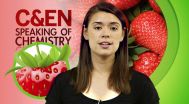(Press-News.org) When it comes to making decisions involving others, the impression we have of their character weighs more heavily than do our assessments of how they can benefit us, a team of New York University researchers has found.
"When we learn and make decisions about people, we don't simply look at the positive or negative outcomes they bring to us--such as whether they gave us a loan or helped us move," explains Leor Hackel, a doctoral candidate in NYU's Department of Psychology and the study's lead author. "Instead, we often look beyond concrete outcomes to form trait impressions, such as how generous a person seems to be, and these impressions carry more weight in our future social decisions."
The study, which appears in the journal Nature Neuroscience, offers new insights into how we learn about people from our interactions with them--and departs from existing scholarship. A prevailing view in the field posits that when we learn from positive or negative feedback, we come to see the people or things we learned about in terms of the benefits--or "reward value"--they bring us.
To explore the criteria for the appraisals we make, the research team, which also included David Amodio, an associate professor in NYU's Department of Psychology, and Bradley Doll, a post-doctoral fellow at NYU and Columbia University, conducted an experiment in which participants made a series of "reward-based" decisions while their neural activity was monitored using functional magnetic resonance imaging (fMRI).
In the experiment, participants learned about other people in a series of interactions in an economic game played over the computer. For each round of the game, the participant viewed two other players and chose one to interact with; the chosen player would then share an amount of money. Some shared a lot and others shared little. Importantly, some players had larger pots of money than others, and so the amount they shared could represent a large or small proportion of their funds. This proportion represented a player's generosity, which was independent from the absolute value of the money they shared.
The aim of this part of the study was to determine whether participants learned the relatively generosity of a player--a "trait impression"--in addition to learning the monetary worth of the player.
The researchers' statistical tests showed that participants learned generosity information (the proportion the player gave relative to his endowment) more strongly than reward value (the absolute amount the player actually gave). The strong tendency to focus on a player's trait characteristics was striking, the study's authors note, given that computer modeling revealed that a focus on a player's reward value would have yielded more shared money to the participant.
During the studied period, the researchers examined the brain activity of the subjects as they learned about the reward value and generosity of other players. Here, they found that subjects used a particular part of the brain--the ventral striatum--in learning reward value from the feedback of players--a result consistent with previous research. However, they found that the striatum was also involved in learning about a player's trait generosity, over and above their reward value, suggesting this neurological region has a broader role in learning than previously thought.
Finally, when participants were asked to choose which players they would prefer to interact with in a future cooperative task, their preferences were strongly guided by their trait impressions of players, relative to a player's reward value.
"We think our findings will change the way scientists think about the role of value and the striatum in learning about people and things," observes Amodio. "In other words, our results show that people naturally see others and even objects in terms of more general characteristics--and not just in terms of mere reward value."
INFORMATION:
The study was funded, in part, by the National Science Foundation (BCS 0847350).
Our brains are constantly barraged with sensory information, but have an amazing ability to filter out just what they need to understand what's going on around us. For instance, if you stand perfectly still in a room, and that room rotates around you, it's terrifying. But stand still in a room and turn your eyes, and the same visual input feels perfectly normal. That's thanks to a complex process in our brain that tell us when and how to pay attention to sensory input. Specifically, we ignore visual input caused by our own eye movements.
Now, researchers at The Rockefeller ...
Skygazers at northern latitudes are familiar with the W-shaped star pattern of Cassiopeia the Queen. This circumpolar constellation is visible year-round near the North Star. Tucked next to one leg of the W lies a modest 5th-magnitude star named HD 219134 that has been hiding a secret.
Astronomers have now teased out that secret: a planet in a 3-day orbit that transits, or crosses in front of its star. At a distance of just 21 light-years, it is by far the closest transiting planet to Earth, which makes it ideal for follow-up studies. Moreover, it is the nearest rocky ...
WASHINGTON, D.C. - Shifts in trade winds and ocean currents powered a resurgence of endangered Galápagos penguins over the past 30 years, according to a new study. These changes enlarged a cold pool of water the penguins rely on for food and breeding - an expansion that could continue as the climate changes over the coming decades, the study's authors said.
The Galápagos Islands, a chain of islands 1,000 kilometers (600 miles) west of mainland Ecuador, are home to the only penguins in the Northern Hemisphere. The 48-centimeter (19-inch) tall black and white ...
PROVIDENCE, R.I. [Brown University] -- Even after centuries of earnest oaths and laws, the debate about whether money compromises medicine remains unresolved, observes Dr. Eli Adashi in a new paper in the AMA Journal of Ethics. The problem might not be truly intractable, he said, but recent reforms will likely make little progress or difference.
"This is one of those things we have to appreciate as being with us for a long time," said Adashi, former dean of medicine and biological sciences at Brown University. "It will probably be with us forever. It's probably not entirely ...
Soldiers who served in the glaring desert sunlight of Iraq and Afghanistan returned home with an increased risk of skin cancer, due not only to the desert climate, but also a lack of sun protection, Vanderbilt dermatologist Jennifer Powers, M.D., reports in a study published recently in the Journal of Investigative Dermatology.
"The past decade of United States combat missions, including operations in Iraq and Afghanistan, have occurred at a more equatorial latitude than the mean center of the United States population, increasing the potential for ultraviolet irradiance ...
PHILADELPHIA - Researchers at the Perelman School of Medicine at the University of Pennsylvania have devised an entirely new approach to vaccines - creating immunity without vaccination.
The study, published in Scientific Reports, demonstrated that animals injected with synthetic DNA engineered to encode a specific neutralizing antibody against the dengue virus were capable of producing the exact antibodies necessary to protect against disease, without the need for standard antigen-based vaccination. Importantly, this approach, termed DMAb, was rapid, protecting animals ...
With Congress currently debating the repeal of mandatory country-of-origin labeling (COOL) for meat and poultry - federal law in the US since 2002 - new research from the Sam W. Walton College of Business at the University of Arkansas shines a spotlight on how COOL labeling affects consumers' purchase decisions.
In "A COOL Effect: The Direct and Indirect Impact of Country-of-Origin Disclosures on Purchase Intentions for Retail Food Products," appearing in the September issue of the Journal of Retailing, Marketing Professors Elizabeth Howlett and Scot Burton, along with ...
Researches from the Laboratory of Nanooptics and Plasmonics at the MIPT Center of Nanoscale Optoelectronics have developed a new method for optical communication on a chip, which will give a possibility to decrease the size of optical and optoelectronic elements and increase the computer performance several tenfold. According to their article published in Optics Express, they have proposed the way to completely eliminate energy losses of surface plasmons in optical devices.
"Surface plasmon polaritons have previously been proposed to be used as information carriers for ...
WASHINGTON, Aug. 3, 2015 -- Strawberries are sweet, juicy and delightful. Unfortunately, an expiring federal pesticide exemption could mean 2016 will be the end of strawberries in the U.S. How can we protect our strawberries from pests and comply with federal fumigant standards? In this Speaking of Chemistry video, Sophia Cai explains the problem and some possible solutions. Check it out here: https://youtu.be/noaec9-BmwU.
Speaking of Chemistry is a production of Chemical & Engineering News, a weekly magazine of the American Chemical Society. The program features fascinating, ...
(WASHINGTON, August 3, 2015) - The first protein engineered to help control bleeding episodes in patients with severe von Willebrand disease (vW disease) has been shown to be safe and effective, according to results of a Phase III trial. Study data were published online today in Blood, the Journal of the American Society of Hematology
When a blood vessel becomes damaged, a protein called von Willebrand factor (vWF) helps stop bleeding by guiding clot-forming platelets to the injury. vWF serves as the "glue" that helps platelets stick to a wound. Approximately 1 percent ...

